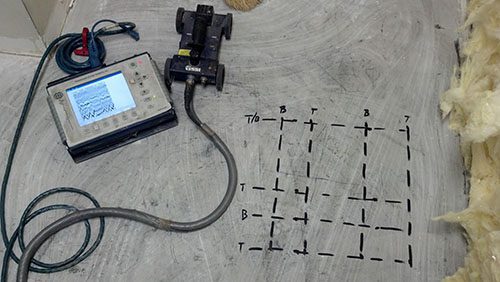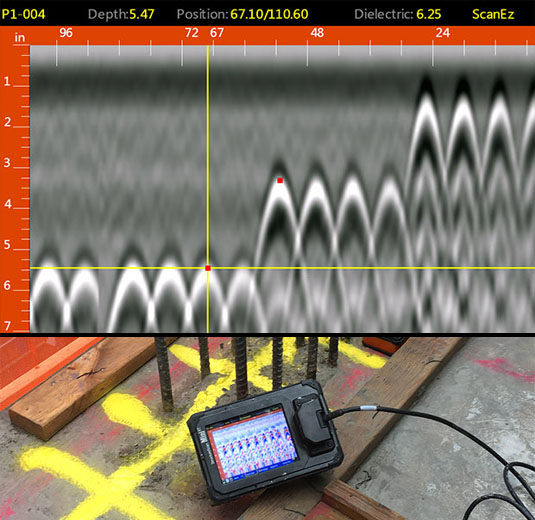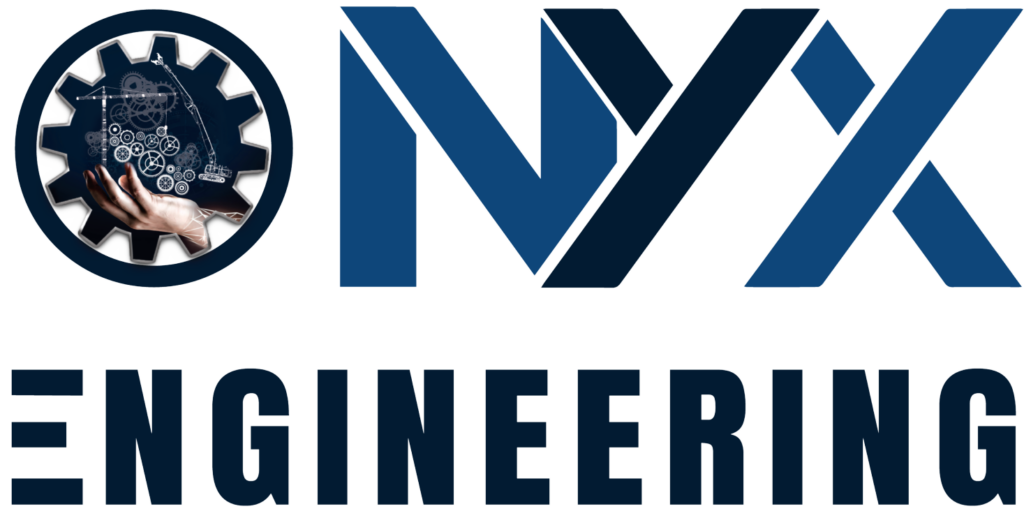Concrete Scanning
At Onyx Engineering, we provide advanced concrete scanning services designed to ensure safety, precision, and efficiency in construction and demolition projects. With over 15 years of experience in silent demolition and structural analysis, we specialize in using state-of-the-art scanning technology to assess and evaluate concrete structures before any cutting, drilling, or demolition work begins.
Concrete scanning is a non-destructive technique used to detect and locate embedded objects such as rebar, post-tension cables, electrical conduits, voids, and other utilities within concrete structures. Using ground-penetrating radar (GPR) and electromagnetic sensors, our scanning technology provides detailed insights into the internal makeup of concrete surfaces without causing any damage.

Since
2009
we specialize in providing state-of-the-art Concrete Scanning services, ensuring that your construction and demolition projects are carried out with unmatched precision and safety. Our advanced non-destructive testing methods allow for accurate detection of embedded objects, such as rebar, post-tension cables, pipes, and conduits, eliminating the risk of damage and costly errors.
Our skilled team delivers detailed scans that help contractors, engineers, and developers make informed decisions, ensuring structural integrity and minimizing project delays.

Why Choose Onyx Engineering for Concrete Scanning?
At Onyx Engineering, we understand the importance of precision and safety in construction and demolition. Our concrete scanning services help you avoid costly mistakes, delays, and potential damage to critical structural components or underground utilities. By using advanced GPR technology, we provide accurate results that allow you to proceed with confidence in your project.
Before beginning any kind of work that involves cutting or drilling into concrete, it is essential to know what lies beneath the surface. Many buildings and structures have complex internal systems like electrical conduits, plumbing pipes, and post-tension cables embedded within the concrete. Damaging these elements can lead to project delays, costly repairs, and in some cases, serious safety hazards.
Our Concrete Scanning services help prevent these issues by providing detailed, accurate information about what is inside the concrete. By detecting and mapping the positions of various materials and voids, we enable contractors, engineers, and developers to make informed decisions, ensuring that their projects move forward efficiently and without risk.
Key Benefits of Concrete Scanning
- Enhanced Safety: By identifying hidden objects such as rebar, cables, or pipes, we reduce the risk of accidents and structural damage during cutting or drilling operations.
- Cost Efficiency: Scanning helps avoid unnecessary damage to utilities or reinforcement, preventing costly repairs and project delays.
- Non-Destructive Testing (NDT): GPR technology allows us to scan concrete without causing any damage, preserving the integrity of the structure.
- Accurate Mapping: Detailed scans provide a clear visual representation of what’s inside the concrete, ensuring that you know exactly where and how to proceed with your project.Faster Execution: Scanning enables quicker project planning and execution by eliminating uncertainties related to hidden structures within concrete.
Our Expertise
Onyx Engineering combines industry-leading technology with a highly skilled team of professionals to deliver exceptional concrete scanning services. We provide:
- Ground Penetrating Radar (GPR) Scanning: Non-invasive scanning to detect and map embedded objects within concrete.
- Electromagnetic Induction Scanning: Used for detecting metal components like rebar and post-tension cables.
- Structural Analysis: Assessing the condition of the concrete, identifying cracks, voids, or weaknesses that could affect the structure’s performance.
Our team is experienced in working on a wide range of projects, including building renovations, infrastructure repairs, bridge assessments, and industrial demolitions.

